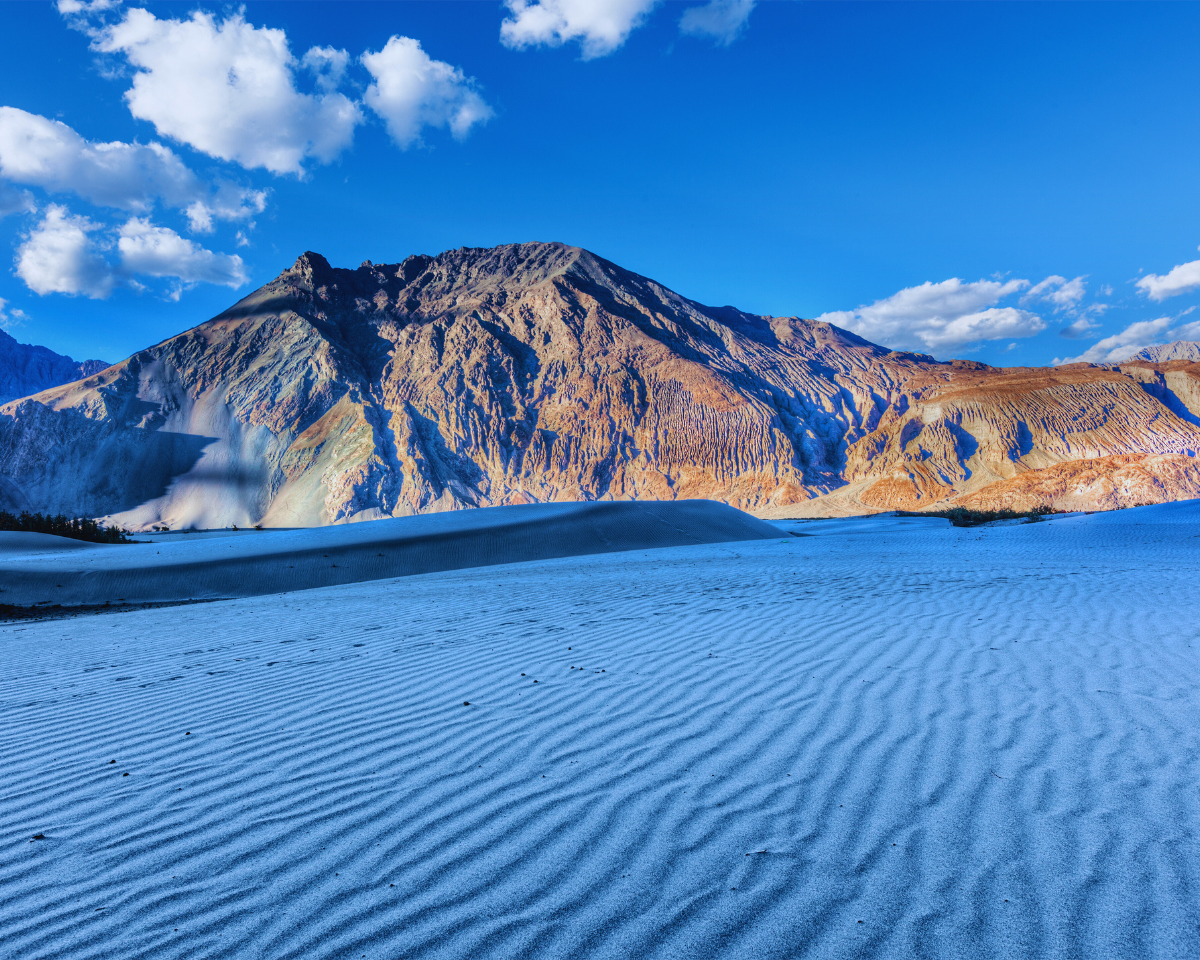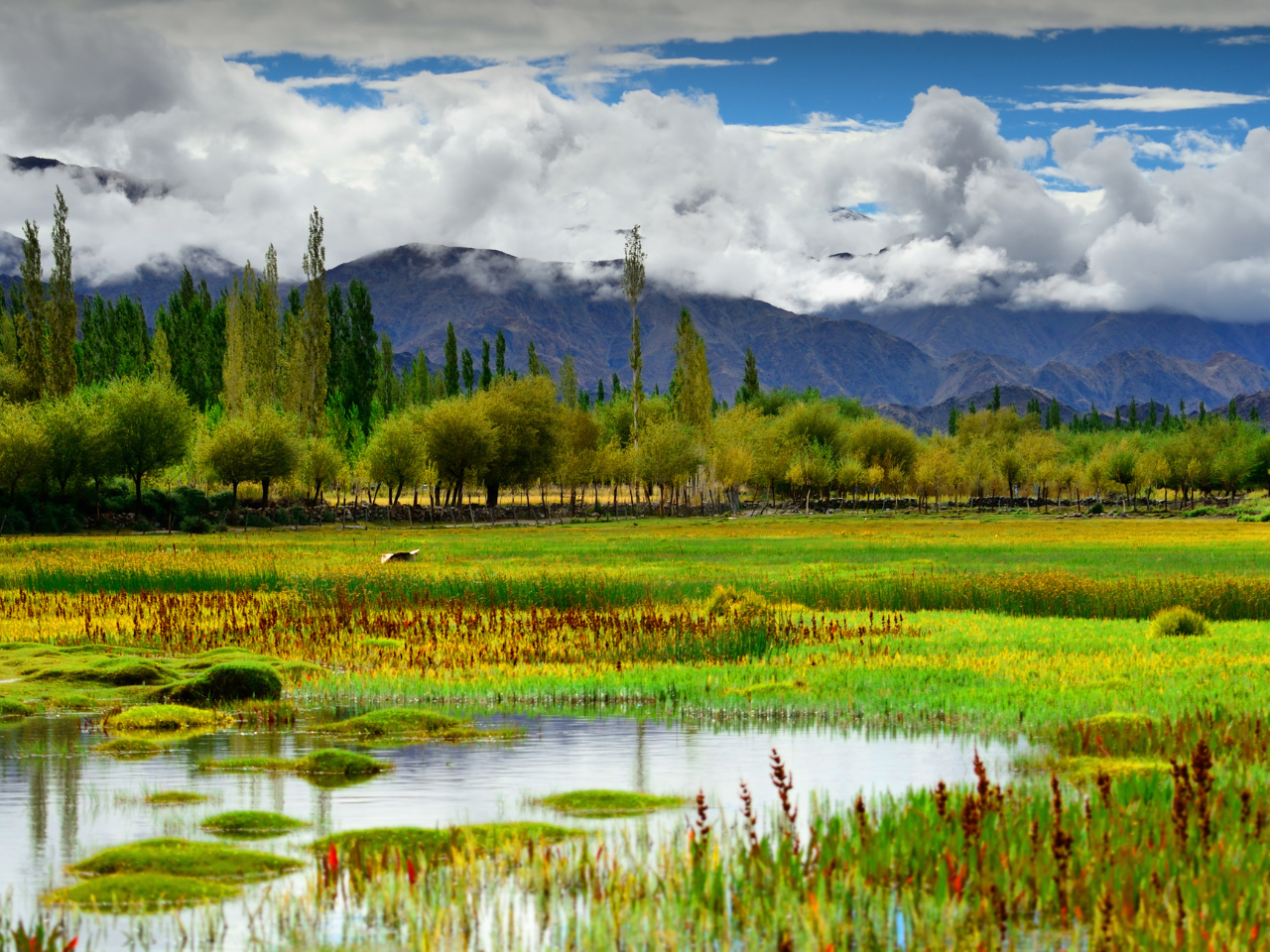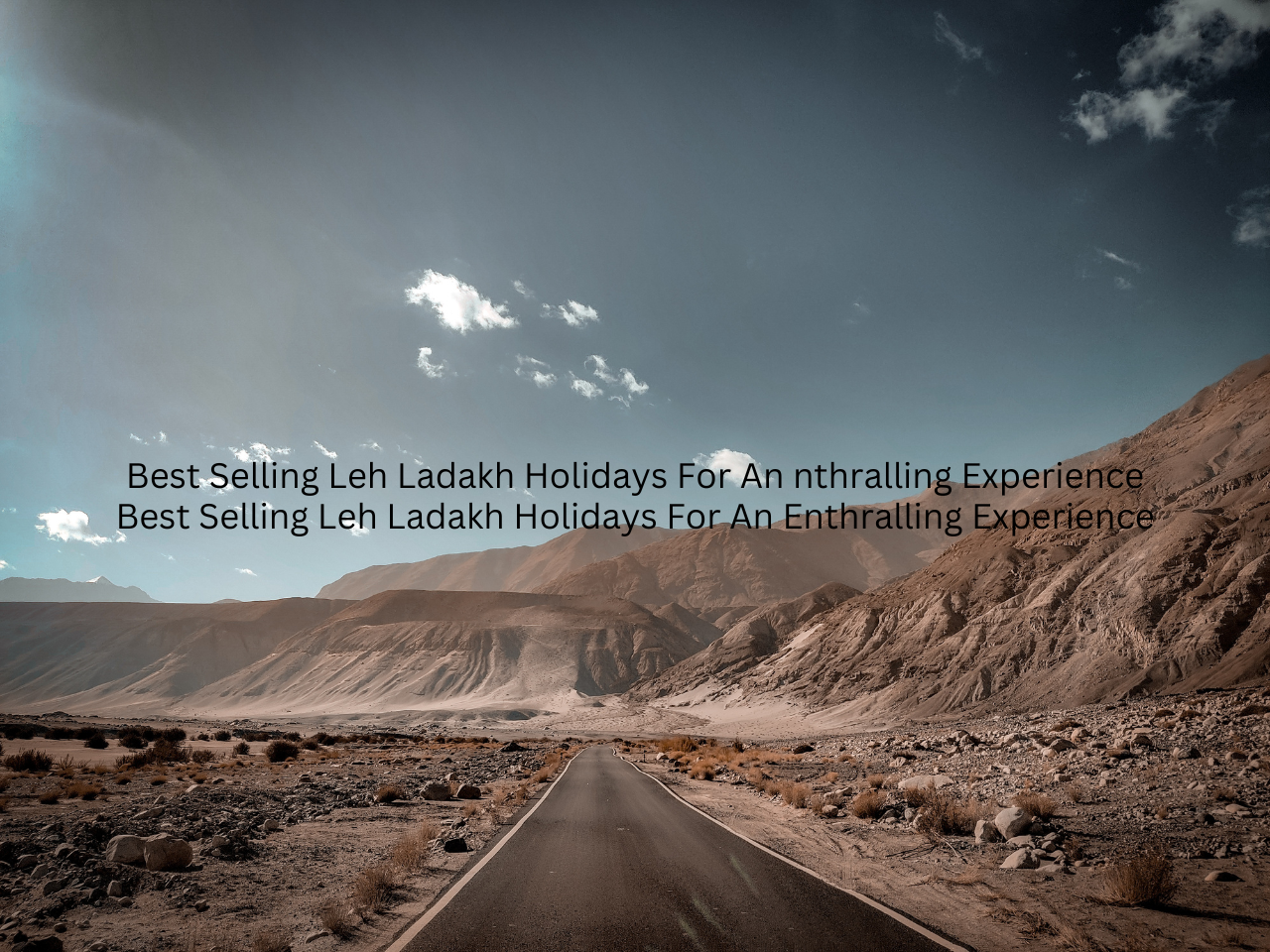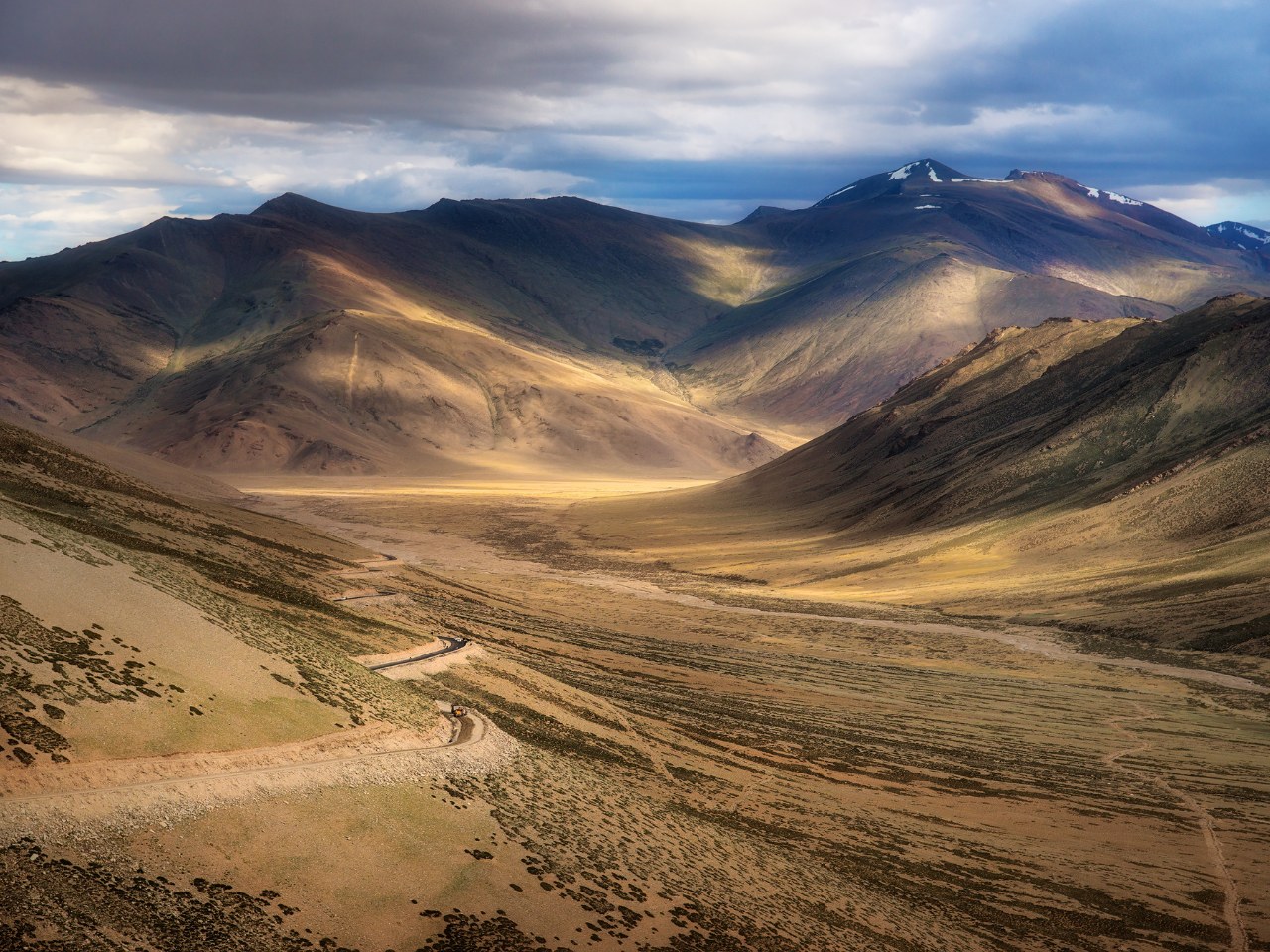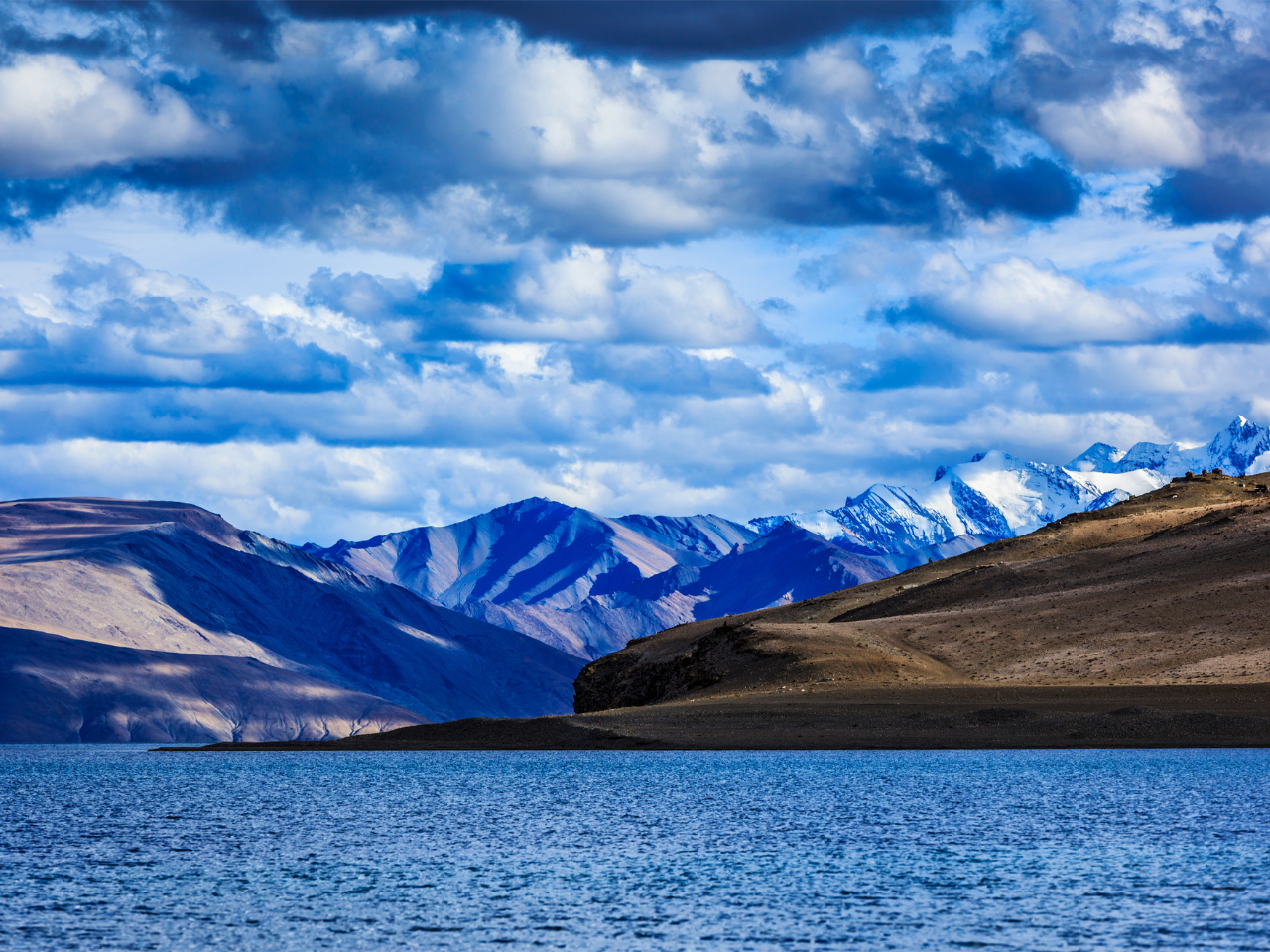Best Time to Visit Nubra Valley
Best Time To Visit Nubra Valley
Nubra Valley, a hidden gem nestled between the majestic peaks of the Himalayas in Ladakh, beckons travelers with its dramatic landscapes, contrasting beauty, and unique culture. Unlike its high-altitude neighbor Leh, Nubra Valley offers a wider range of temperatures and landscapes, making it a destination worth exploring throughout the year. This guide explores the unique charm of each season in Nubra Valley, empowering you to choose the season that perfectly aligns with your desired Himalayan adventure.
Spring (April to June): Blossoms and the Opening of the Valley
Spring paints Nubra Valley in a vibrant palette as the harsh winter loosens its grip. The weather is pleasantly cool, with average temperatures ranging from -1°C (30°F) to 15°C (59°F). Melting snow reveals lush green meadows dotted with wildflowers, creating a picturesque scene. This shoulder season offers a glimpse of Nubra Valley’s beauty before the peak tourist influx.
Highlights:
- Pleasant Exploration: Enjoy comfortable temperatures for sightseeing, exploring gompas like Diskit Monastery and Samstanling Monastery, and starting to acclimatize to the high altitude.
- Festival Celebrations: Witness the vibrant Maitreya Festival, a two-day celebration held at the Diskit Monastery, featuring masked dances and traditional performances.
- Blossoming Beauty: Witness the gentle awakening of nature with the blooming of apricot orchards and colorful wildflowers.
Ideal for: Travelers seeking comfortable weather for exploring, those interested in experiencing Ladakhi culture through festivals, and photographers looking to capture the awakening beauty of the Nubra Valley.
Things to Consider:
- Limited Amenities: Some high-altitude passes like Khardung La might still be closed due to snow. Be prepared for slightly limited amenities compared to the peak season.
- Temperatures: Pack layers of clothing as the weather can be unpredictable, with chilly mornings and evenings.
Summer (July to September): The Peak Tourist Season
Summer brings the warmest weather to Nubra Valley, with average temperatures ranging from 10°C (50°F) to 25°C (77°F). Crystal-clear skies offer stunning views of the surrounding peaks, while the valley transforms into a verdant paradise. This is the peak tourist season, so expect larger crowds.
Highlights:
- Ideal Adventure Conditions: Enjoy comfortable temperatures for trekking adventures to Hunder Sand Dunes, exploring Shyok Valley, and participating in jeep safaris.
- Cultural Immersion: Immerse yourself in the unique culture of the Nubra Valley by visiting villages, interacting with the local people, and witnessing traditional demonstrations.
- Festival of Tsechu: Witness the vibrant Tsechu festival, a masked dance festival celebrated in most monasteries across Ladakh, including those in Nubra Valley.
Ideal for: Adventure enthusiasts seeking ideal trekking and jeep safari conditions, travelers interested in experiencing the unique culture of the Nubra Valley, and those who don’t mind larger crowds.
Things to Consider:
- Peak Season Crowds: Nubra Valley can get crowded during this time, especially at popular tourist spots. Book your accommodation and activities well in advance.
- Potential for Afternoon Showers: Occasional afternoon showers might occur, so pack a light raincoat.
Autumn (October and November): A Farewell to Summer’s Splendor
Autumn paints Nubra Valley in hues of golden yellow and orange as the summer heat subsides. The weather becomes progressively cooler, with average temperatures ranging from 5°C (41°F) to 15°C (59°F). The skies remain clear, offering breathtaking views of the changing landscapes. This shoulder season offers a chance to experience Nubra Valley’s beauty without the peak season crowds.
Highlights:
- Comfortable Trekking: Enjoy comfortable trekking conditions with fewer crowds on popular trails like the one leading to the enthralling Sumdo.
- Witnessing the Transformation: Capture stunning photographs of the valley adorned with autumnal colors, contrasting beautifully with the snow-capped peaks.
- Fewer Crowds: Experience a more peaceful and serene atmosphere in the valley compared to the peak season.
Ideal for: Travelers seeking comfortable weather for trekking, photographers looking to capture the dramatic autumn landscapes, and those who prefer a less crowded experience.
Things to Consider:
- Colder Temperatures: Pack warm clothes as the nights can get quite chilly, especially towards the end of autumn.
- Potential Road Closures: Khardung La, the gateway to Nubra Valley, might start to experience occasional closures due to snowfall towards the latter part of autumn. Be prepared for potential travel delays.
Winter (December to March): A Serene Escape (For the Well-Prepared)
Winter transforms Nubra Valley into a serene wonderland, with temperatures plummeting to averages ranging from -15°C (5°F) to -30°C (-22°F). The biting cold and limited daylight hours make this season ideal only for the most experienced and well-prepared travelers. However, for those who dare, Nubra Valley offers a unique and unforgettable winter experience.
Highlights:
- Frozen Landscape: Witness the dramatic transformation of the Nubra Valley, with frozen rivers, snow-covered sand dunes at Hunder, and a mystical atmosphere.
- Stargazing Paradise: The clear, crisp winter skies offer breathtaking views of the Milky Way and countless constellations, with minimal light pollution.
- Unique Winter Sports (Limited Availability): If weather permits, you might encounter opportunities for winter sports activities like snow biking on designated stretches.
Ideal for: Experienced winter trekkers seeking an extreme adventure, photographers looking to capture the unique beauty of a frozen Nubra Valley, and astronomy enthusiasts seeking exceptional stargazing conditions.
Things to Consider:
- Extreme Weather: Be prepared for harsh weather conditions with proper clothing and high-altitude winter camping gear. Ensure you have the necessary experience and skills for winter travel in the Himalayas.
- Limited Amenities: Most tourist facilities, shops, and restaurants close during winter. Be prepared for a more basic and self-sufficient experience. Stock up on essential supplies before reaching Nubra Valley.
- Transportation Challenges: Road closures due to heavy snowfall are frequent, especially on Khardung La. Be flexible with your itinerary and transportation options. Consider contacting local tour operators who specialize in winter travel in Nubra Valley.
Beyond the Seasons: Planning Your Perfect Nubra Valley Escape
While the seasons offer distinct experiences, Nubra Valley’s charm transcends the weather. Here are some additional factors to consider when planning your trip:
- Inner Line Permit: An Inner Line Permit (ILP) is mandatory to enter Ladakh and explore Nubra Valley.
- Double-Humped Camels: Enjoy a unique experience by riding the double-humped Bactrian camels found in Hunder during the summer and shoulder seasons.
- Sustainable Practices: Nubra Valley is a fragile high-altitude ecosystem. Practice responsible tourism by minimizing plastic use, respecting local customs, and disposing of waste properly.
Nubra Valley: A Journey Through Time and Landscapes
Nubra Valley, with its contrasting landscapes, unique culture, and breathtaking beauty, offers an unforgettable experience for all types of travelers. Regardless of the season, you’re guaranteed stunning scenery, a chance to explore a different side of Ladakh, and create lasting memories in the heart of the Himalayas. So, pack your bags, choose the time that best suits your adventure spirit, and get ready to discover the enchanting contrasts of Nubra Valley.
MAR-MAY
14 - 25°C
JUN-OCT
10 - 20°C
DEC-FEB
1 - 10°C
More Best Time to Visit
Best Seller Package Ladakh
- 7N/8D
Best Selling Leh Ladakh Holidays For An Enthralling Experience
(568)
Top Attractions Ladakh
Explore More About Ladakh
- Manali, the princely state of Himachal Pradesh is well connected with most of the neighboring cities like Shimla, Kullu, Delhi, Dehradun, and Mussoorie. Following are the ways by which you can reach Manali.
- By Air: The closest airport to Manali is Bhuntar situated approximately fifty kilometers from the city. Various domestic flights connect Bhuntar with Chandigarh and Delhi. Once on reaching the airport, the traveler can take the prepaid taxi from Manali. Owing to the weather conditions, the most reliable option for getting to Manali is by flight.
- By Bus: Manali is connected to the essential tourist destinations like Leh, Shimla, Dharamshala, Kullu and New Delhi. The journey by bus from Delhi to Manali is five hundred and fifty kilometers. Generally, it is advisable to book tickets via AC Volvo coaches, as the buses are more comfortable than the local ones.
- Road/Self Drive: A car drive to Manali is exuberantly a breathtaking one! The travelers can view scenic glimpses of the valleys and mountains from almost all direction while on a road trip. Though most of the tourist prefer a self-drive to Manali, it is generally advisable to hire a taxi in case the traveler is not comfortable driving its way to the mountainous region.
- Offering distinct charms in all seasons, Manali is a captivating destination. Summers observe Manali turning into an escape from blistering heat plain while winters embellish the town in a graceful turnout of white snow. Have a look at the breakup representing Manali’s climatic conditions:
- September to February: The monsoons stretch to an end in September while winter makes its entry from October. The temperature during winter can go as down to minus one degree Celsius, therefore make sure to carry warm clothes to keep yourself warm in this weather. The time when you can enjoy the spectacular scene and snowfall is in between December to January, making this month span the most cherishable between the honeymooners. This time marks an ideal time for adventure enthusiasts who relish skiing.
If you are coming via Flight then reach Srinagar and if you are coming via train then you can come to Jammu.
Jammu, Katra, Udhampur and Srinagar.
Yes you can book fully personalized private cab to spend your holiday.
Best time to visit Kashmir is from October to April Month.
Yes we provide Shikara Ride in Dal Lake free of cost with our package.
No Flights are excluded in Package Cost.
Dinner and Breakfast both are included in your Kashmir Trip in every hotel.
Yes Toll charges,Parking Charges,Driver Allowance all these are already included in your trip.
Contact us 8527791773
Yes it’s not included in package as its a adventure so you can book Gondala Ride online.
Yes, in Gurez you can have the Camp Experience.
You can find snow in Gulmarg, Sonamarg and Gurez
Yes
Gulmarg, Sonamarg, Gurez, Pahalgam, Srinagar, Kargil, Dodhpathri, Patnitop, Sintop and Yusmarg.
Yes
Adventurous activities have always been a fancy against which one can challenge and put to test one’s caliber. While we talk about numerous adventure destinations in India, a multitude of names pop up, yet nothing matches the wide variety of adventure activities that are associated with Manali. Therefore, if you are still in the phase to decide upon which adventurous sports to do in Manali, then take a back seat and simply go through the below adventurous activities.
- River Rafting
- Paragliding
- Skiing
- Hiking
- Mountain Biking
- Mountaineering
- Zorbing
- Jeep Safari
- Camping
- River Crossing
- Angling
- Rock Climbing
- Rappelling
- Snow Scooter
- Cable Car Ropeway
- Kayaking

